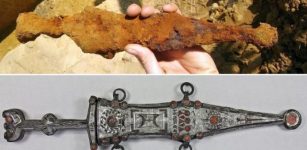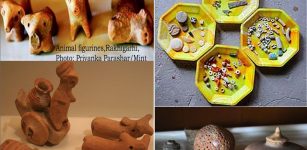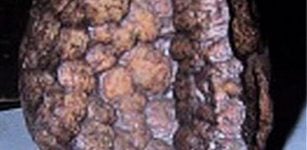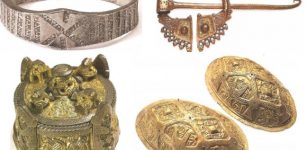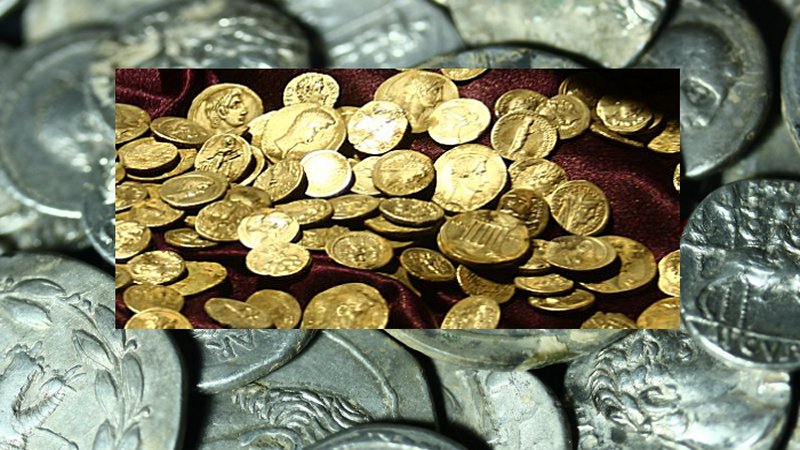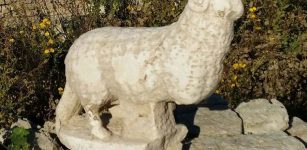3,300 Years Old Mysterious Jade Artifact – Puzzles Scientists
MessageToEagle.com – A small stone artifact fashioned as a wood-carving gouge, discovered during an archaeological excavation on Emirau Island, Bismarck Archipelago, Papua New Guinea, has been determined to consist of jadeitite – jadeite jade.
It is very unusual jade artifact. Jadeite jade this ancient is only known from Japan and usage in Korea, otherwise across the Pacific in the New World or in Europe.
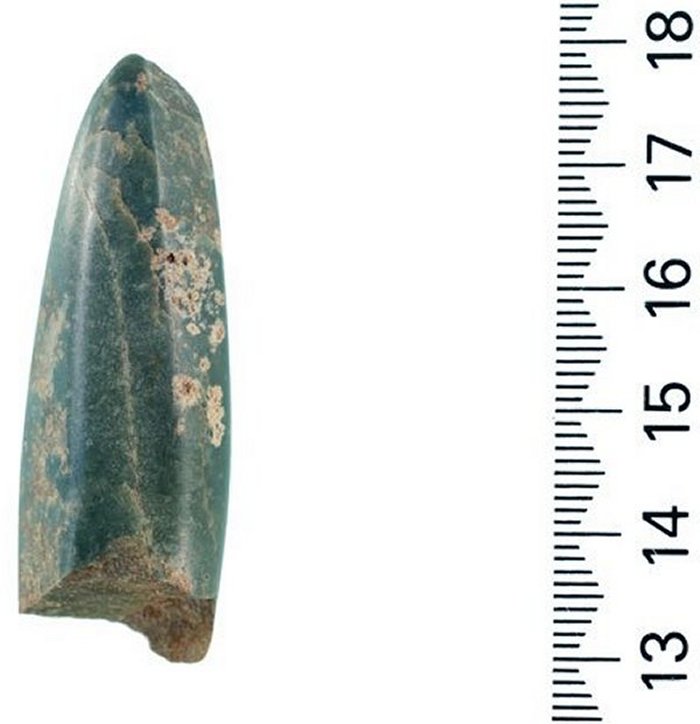
A photograph of the front of the jade gouge shown with a centimeter scale (Les O’Neil, University of Otago)
According to the researchers this finding is very puzzling because the rock has never been described in the archaeological record of the region.
So, where does it come from?
Researchers are uncertain and say the discovery is geochemically extraordinary!
This extremely unusual example of jade was found by an international team of archaeologists and geologists in the Southwest Pacific, thousands of miles away from the nearest known geological source.
The small green artifact is about 3,300 years old and has a chemical composition that is unlike any other described jade. Found during an archaeological excavation on a coral island in Papua New Guinea, the rock is thought to have been used as a wood gouge by the people living there.
But where did it come from?
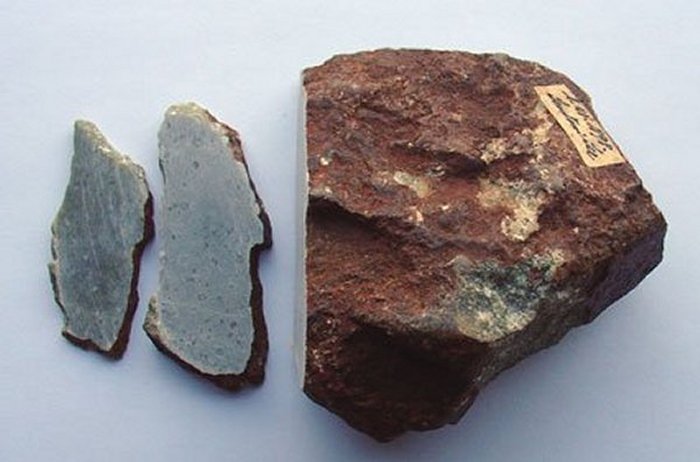
The researchers, from the American Museum of Natural History, the University of Otago (New Zealand), and the University of Papua New Guinea, address this question in an upcoming special issue of the European Journal of Mineralogy on jadeitite, the rock that defines one type of jade.
Jade is a general term for two extremely tough rocks—jadeite jade (jadeitite) and nephrite jade, each composed almost entirely from a single mineral.
Throughout history, these rocks have been made into tools and ornamental gems that were worn, traded, and treasured.
Many nephrite jade sources exist, but the prominent locations are China, New Zealand, Russia, and Canada. Far rarer is jadeite jade, which was used by people living in what is now Central America and Mexico over a span of two millennia prior to the arrival of European colonists.
“In the Pacific, jadeite jade as ancient as this artifact is only known from Japan and its usage in Korea,” said George Harlow, a curator in the Museum’s Department of Earth and Planetary Sciences and the lead guest editor for the special journal issue.
“It’s never been described in the archaeological record of New Guinea.”
The artifact was recovered from Emirau Island in the Bismark Archipelago. It was likely dropped from a stilt house into the water below and covered by years of beach sand.
After preliminary analysis at Academia Sinica (Taiwan) and the University of Otago, the gouge was sent to the Museum, where it was studied with x-ray microdiffraction, a technique that bounces a small beam of x-rays off the specimen to elucidate the atomic structure of the material, and, consequently, the types of minerals it contains. Harlow also used the Museum’s electron microprobe to determine the chemical composition of the minerals in the jadeitite.
“When we first looked at this artifact, it was very clear that it didn’t match much of anything that anyone knew about jadeite jade,” Harlow said.
The chemical composition of the jadeite in the rock is substantially different from that of other jadeitite samples. Jadeite, a mineral of sodium, aluminum, silicon and oxygen in its pure form, is usually mixed compositionally with small amounts of calcium, magnesium, and iron, representative of the minerals diopside and, to a lesser extent, hedenbergite.
The jadeite in the newly discovered jade, however, has almost no diopside content and, instead, contains iron without added calcium, representing the mineral aegirine, containing sodium, iron, silicon, and oxygen.
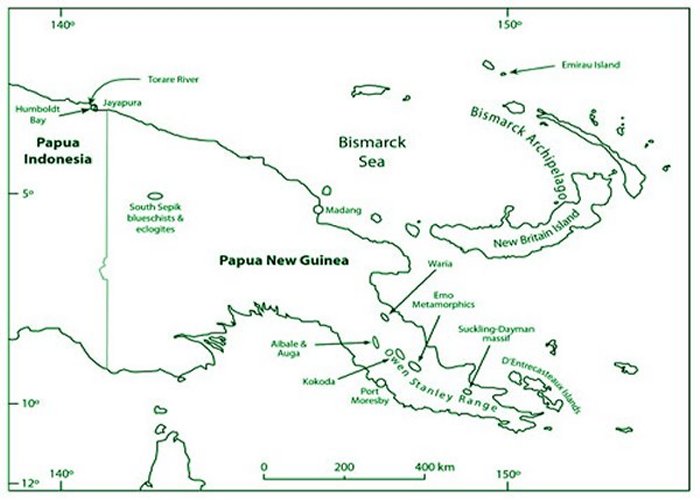
In addition and equally unusual, the artifact contains minerals rich in niobium and yttrium, which, according to Harlow, have never been previously observed in a jadeitite. “It makes very little sense based on how we know these rocks form, and certainly not in the concentration that we see,” he says.
But the even bigger mystery is where this unusual rock came from. Only one jadeite source has been reported with similar chemical properties—a site in Baja California Sur, Mexico. If this were the gouge’s original home, though, it would have had to been transported across the Pacific, a highly improbable scenario for the Neolithic people of the time.
“This jadeite tool points toward prehistoric contacts with the north coast of New Guinea,” said Glenn Summerhayes, an archaeologist at the University of Otago and a co-author on the paper.
“The users of this jadeite gouge were part of the movement of Austronesian-speaking people we call Lapita, who appeared in the western Pacific almost instantaneously around 3,300 years ago, then quickly spread across the Pacific out to Samoa in a couple hundred years, and from there formed the ancestral population of the people we know as Polynesians.“Where they came from beforehand has always been a matter of debate, so any find linking these early Lapita settlements with the west is important in modeling the nature of their beginning.”
After investigating the possibility of other sources in Asia and coming up empty-handed, the researchers came across a clue in the form of an unpublished manuscript by German scientist C. E. A. Wichmann, at Utrecht University in the Netherlands, who collected some curious rocks from the Torare River in the Papua province of Indonesia in the beginning of the 20th century.
According to Wichmann’s manuscript, the rocks he collected have chemical properties that are very similar to the Emirau Island jadeite.
“The discovery of this artifact’s source can be eagerly anticipated as something geochemically extraordinary,” Harlow said, who is now investigating samples to determine if a new source for this unusual type of jadeite has been found. So far, the data support the hypothesis.
MessageToEagle.com



